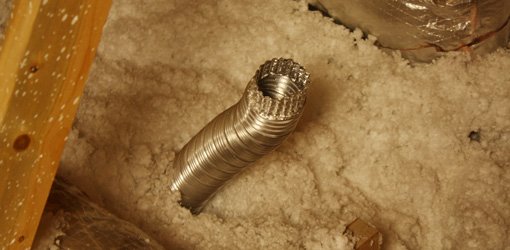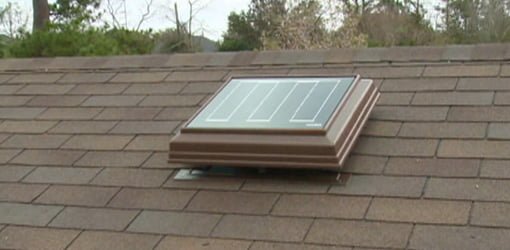Many homeowners don’t know it, but insulation can make a big difference in your home’s energy efficiency. If you’ve never taken a look at the insulation in your attic, you’re probably losing money on utility bills due to air leaks. However, it doesn’t have to stay that way.
By learning how to insulate your attic, floors, and crawlspaces, you can save up to 20% on your home’s heating and cooling costs. Read on for tips on how to insulate an attic and get the most out of your home’s energy.
Why Attic Insulation Matters
According to the U.S. Environmental Protection Agency’s (EPA) ENERGY STAR program, nine out of every 10 homes in the United States are under-insulated. That’s why they’re encouraging homeowners to lower their high utility bills through their “Rule Your Attic!” campaign.
Sealing and insulating with ENERGY STAR-certified products can help regulate indoor temperatures, reduce energy consumption, and lower utility costs. Here are just a few reasons why homeowners should prioritize attic insulation:
Energy Savings
Insulation helps reduce the workload on your heater and AC unit, resulting in lower energy bills. These savings can add up over time, putting hundreds of dollars a year back in your pocket.
Improved Comfort
Well-insulated attics create more consistent indoor temperatures throughout the home. This means fewer cold spots in winter and less heat buildup in summer. No matter what temperature you like to set your thermostat to, insulation helps keep it steady.
Environmental Impact
Reducing energy consumption with insulation helps decrease your home’s carbon footprint. By running your heating and electricity less, you require less utility power, which means a lower impact on the environment.
How To Measure Insulation Levels
Before ripping out old insulation, you should take a closer look at your attic. This will help you decide how much attic insulation you need and whether you even need to replace the old insulation to begin with. To measure attic insulation:
- Locate the attic access point and safely enter the space.
- Look for exposed ceiling joists, which indicate insufficient insulation.
- Check for any signs of damage or compression.
- Use a ruler or tape measure to determine the depth of existing insulation.
Now that you know whether you need to replace your old insulation and how much you’ll need, you’re ready to start sealing and insulating.
Inadequate attic insulation is one of the most common issues in homes. Adding insulation to meet the recommended level for your climate zone can make a dramatic difference in home comfort and efficiency.
Sealing Air Leaks
Before adding insulation, check for any air leaks in the attic. Sealing these leaks helps prevent outdoor pollutants from seeping into your house and keeps your energy costs down.
Common Air Leak Sources
Air leaks often occur around:
- Electrical outlets and light fixtures
- Plumbing vents and pipes
- Attic hatches or pull-down stairs
- Recessed lighting fixtures that penetrate the ceiling
Sealing Techniques
To effectively seal air leaks:
- Use caulk for small gaps and cracks.
- Apply foam sealant for larger openings.
- Install weatherstripping around attic access points.
- Consider using rigid foam insulation to cover large, inaccessible areas.

While you’re at it, you can also repair leaks in your AC ductwork and replace worn weather stripping around doors to make sure no chilled air is escaping.
Still, you shouldn’t just seal air leaks inside your house. Be sure to seal outside cracks in your home before installing insulation to make sure there are no places for air to get in or out.
Understanding R-Values
Insulation effectiveness is measured in R-values, which indicate thermal resistance. Higher R-values signify better insulating performance. The needed R-value varies by climate zone, so homeowners should consult regional guidelines to determine the best level for their area. In general, colder climates require higher R-values for better insulation performance.
Choosing the Right Insulation
There isn’t just one type of insulation, and each one has its advantages. Before you head to your local hardware store, consider the following insulation options:
Fiberglass Insulation
Fiberglass is a popular and cost-effective option. It comes in batts or rolls and is easy to install between attic joists. It also has a good R-value per inch, making it a worthy investment.
Fiberglass resists moisture and doesn’t settle over time, giving it better longevity than other options on the market. For more information, check out our guide on how to install fiberglass insulation in your attic.
Cellulose Insulation
Cellulose insulation, made from recycled paper products, is an eco-friendly choice. Unlike other options, you can blow it into your attic, making it ideal for filling irregular spaces.
Cellulose has some unique perks, along with a higher R-value, giving it an edge over traditional fiberglass insulation. It contains fire retardants, making it safer for your home. It’s also extremely dense, giving it better soundproofing than other types of insulation.
Spray Foam Insulation
While more expensive, spray foam insulation offers excellent air-sealing properties and high R-values. It’s particularly effective for sealing and insulating in one step, though you may need to hire a professional to install it. This foam expands to fill gaps and crevices, providing an air barrier that reduces drafts.
DIY Insulation Installation
You can install attic insulation yourself, but you need to follow the proper safety procedures.
Safety Precautions
When working in the attic, homeowners should:
- Wear protective gear, including gloves, goggles, and a respirator mask.
- Use sturdy boards to walk on, avoiding stepping directly on joists or insulation.
- Maintain proper lighting and ventilation in the work area.
- Avoid electrical wiring and other hazards that may be present.
Be aware that fiberglass insulation can irritate your skin and eyes. If you’re working with fiberglass, be sure to wear long sleeves and pants during installation.
Installation Steps
To install attic insulation:
- Clear the attic of debris and seal any air leaks.
- Install baffles near the eaves to maintain proper ventilation.
- Lay unfaced batts or rolls between joists. For rolls, unroll them to cover the surface. Alternatively, use a blower to apply loose-fill insulation.
- Ensure even coverage and proper depth based on R-value requirements.
- Avoid compressing the insulation, as this can reduce its effectiveness.
Tips for a Successful DIY Installation
- Plan the project during moderate weather to avoid working in extreme temperatures.
- Use high-quality materials to ensure long-lasting performance.
- Consider renting specialized tools, such as an insulation blower, to make the process easier.
It’s important to prevent moisture buildup underneath your insulation. When installing, make sure the insulation doesn’t block the soffit and rooftop vents. If you have any questions, don’t hesitate to reach out to an insulation contractor.
Professional Installation Considerations
If you’re not experienced with DIY projects, it may give you more peace of mind to hire a professional to insulate your attic.
Benefits of Professional Installation
Professional installers offer:
- Expertise in determining the right insulation type and amount for specific homes.
- Access to specialized equipment for efficient installation.
- Knowledge of local building codes and safety regulations.
- Comprehensive warranties and guarantees on their work.
To find qualified local insulation contractors, check industry association directories like the North American Insulation Manufacturer’s Association (NAIMA) and the Insulation Contractors Association of America (ICAA).
Rebates and Incentives
Many homeowners can take advantage of financial incentives for energy-efficient upgrades, including attic insulation projects. These incentives can make insulation projects more affordable and give homeowners more motivation to complete the project.
Utility Company Rebates
Local utility companies often offer rebates for insulation projects. These can significantly offset the cost of materials and installation. Homeowners should contact their utility company to learn about available programs and application requirements.
Tax Credits
Homeowners should consult with a tax professional to determine if they’re eligible for federal and state tax credits. Insulation tax credits can provide substantial financial benefits and make energy-efficient upgrades more accessible.
Government Grants and Programs
Certain government agencies offer grants and financing programs to support energy efficiency projects. These programs often prioritize low- and middle-income households, providing essential support for energy-saving home improvements. Homeowners can research available programs, such as the weatherization assistance program, to find additional funding opportunities for their insulation projects.
Final Thoughts About Attic Insulation
As energy costs continue to rise, attic insulation becomes increasingly important. Still, many homeowners neglect their insulation, since many times their attics are out of sight, out of mind. However, with the right approach and materials, you can save money and create a more energy-efficient home that’ll keep giving you savings for years to come.
FAQs About Attic Insulation
Unfaced, paperless insulation is the best choice for attics. The paper on faced insulation can trap moisture. Unfaced insulation allows humidity to pass through.
Vapor barriers are not ideal for most attic climates. Instead, use unfaced insulation. This allows interior humidity to evaporate through the ceiling.
Blown-in loose fill is often cheaper than batts since it doesn’t require custom cutting and fitting. However, compare quotes for both materials and labor.
Yes, adding rigid foam over existing fiberglass batts boosts the overall R-value. Properly seal the seams to prevent condensation issues.









